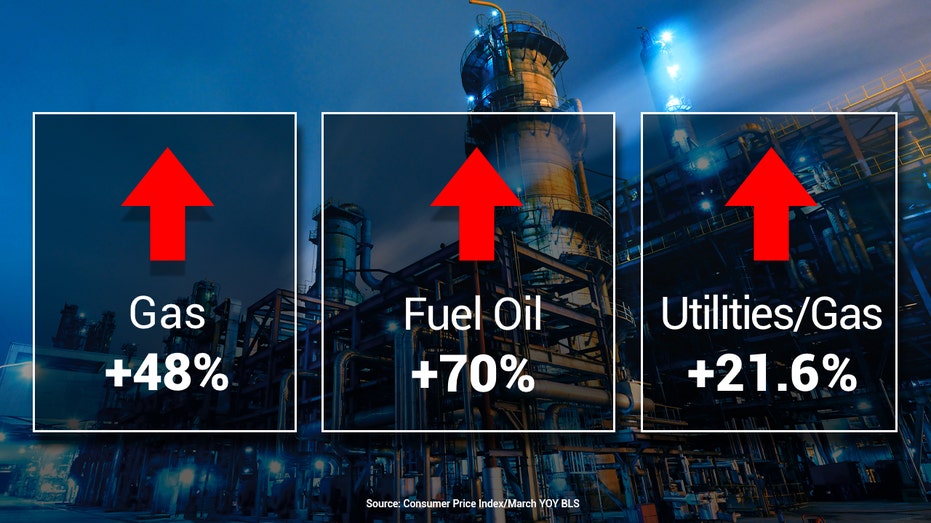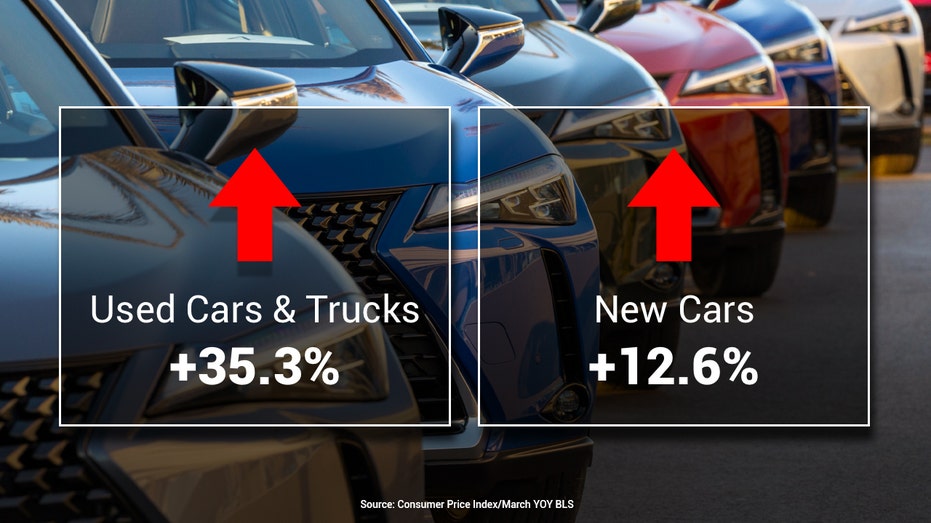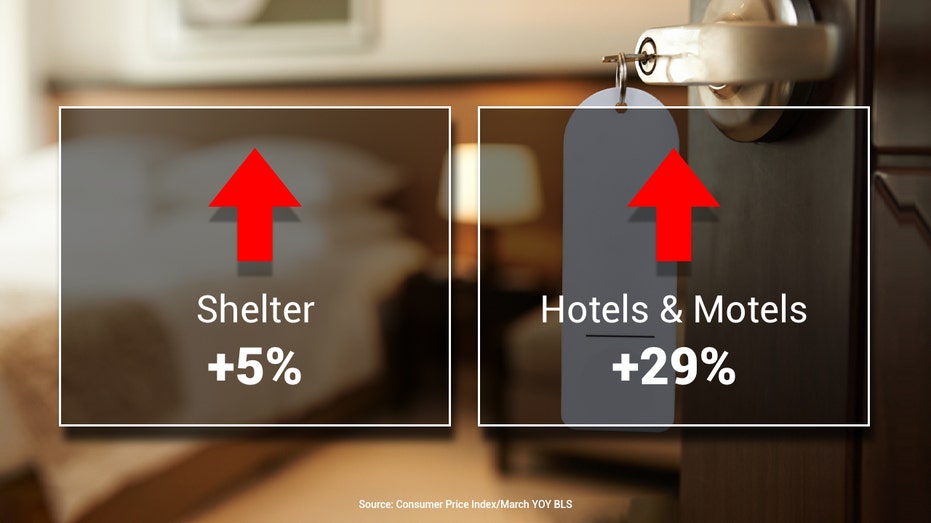March inflation breakdown: Where are rising prices hitting Americans the hardest?
Consumer price increases were widespread in March
Inflation at 40-year high for fifth consecutive month
FOX Business' Cheryl Casone reports on the latest inflation data, which showed another jaw-dropping figure as the war between Russia and Ukraine sent oil and gas prices spiraling higher in March.
American households are confronting the steepest inflation in four decades, paying more for everything from cars to gasoline to food as soaring prices eat away at most workers' wage gains.
The Labor Department said Tuesday that the consumer price index, which measures a basket of goods including gasoline, health care and rent, rose 8.5% in March from a year ago, the fastest pace since December 1981. Prices jumped 1.2% in the one-month period from February, the largest month-to-month jump since 2005.
So-called core prices, which exclude more volatile measurements of food and energy, climbed 6.5% in March from the previous year – up from the 6.4% increase recorded in February. It was the steepest 12-month increase since August 1982.
FED RAISES INTEREST RATES FOR FIRST TIME IN 3 YEARS, PROJECTS 6 MORE HIKES AS INFLATION SURGES
The inflation spike has been bad news for President Biden, who has seen his approval rating tumble as consumer prices rise. The White House has blamed the price spike on the Russian invasion of Ukraine, supply-chain bottlenecks and other pandemic-induced disruptions in the economy, while Republicans have pinned it on the president's massive spending agenda and his energy policies targeting the oil and gas industries.
"March may prove to be the peak for year-over-year inflation measures for this cycle," said Ben Ayers, Nationwide senior economist. "Gasoline prices have leveled off in April and much of the initial spike in commodity costs to the Russian invasion was priced in during March. Still, given the high starting point and the likelihood of further delays to the healing of supply chains, inflation readings should remain highly elevated through 2022 and into 2023."
Here's a breakdown of where Americans are seeing prices rise the fastest as they wrestle with sticker shock for the first time in a generation.
Energy

Energy prices, which have been a major driver of inflation, rose a stunning 11% in March from the previous month, and are up 32% from last year. That's in part because the Russian invasion of Ukraine in late February drove a massive surge in oil and gasoline prices, which hit a record high in mid-March.
Gasoline, on average, costs 48% more than it did last year after rising 18.3% in March on a monthly basis, the Labor Department said.
The average price for a gallon of gas was at $4.09 nationwide on Tuesday, according to AAA, up from $2.87 one year ago but down from the high of $4.33 recorded on March 11. Still, in California, prices are as high as $6 a gallon. Prices had not topped $4 a gallon nationally since 2008.
Experts expect energy prices to cool somewhat in the coming months, although consumers could be forced to pay higher-than-usual prices for some time.
"The cool-down period for consumer prices may take a long time," said Jeffrey Roach, chief economist at LPL Financial. "Supply chains are still clogged, consumers have pent up demand for services and the pool of available workers is small."
Food

Food prices continued to accelerate in March, rising 1% on a monthly basis
Americans are increasingly likely to see far more expensive grocery bills. In all, food prices jumped 8.8% in March from the previous year, with the largest increases in cereal and bakery products (10%), poultry, fish and meat (13.8%), fresh fruits and vegetables (8.1%), and eggs (11.2%).
"Food costs are likely to rise further this year as the conditions for a true global price shock within the food complex are present and will likely be clear to all this summer," said Joe Brusuelas, RSM chief economist.
Cars

Unfortunately for Americans who needed to buy a car in December, the price of both new and used vehicles continued to soar.
Used car and truck prices, which have been a major component of the inflation increase, are still up 35.3% from the previous year. However, in a sign of some positive news, prices actually declined by 1.8% in the one-month period between February and March.
The cost of new cars, meanwhile, is up 12.6% from the prior year, largely because semiconductor shortages continue to delay car manufacturing. However, the price of new cars remained flat in March from the previous month.
Rent, appliances and household goods

The price of everyday goods that Americans have in their homes is also on the rise.
CLICK HERE TO READ MORE ON FOX BUSINESS
Shelter costs are up 5% year over year and jumped 0.6% for the month.
Rent costs swelled 0.6% in March and 5.1% over the past 12 months, a concerning development because higher housing costs most directly and acutely affect household budgets. Another data point that measures how much homeowners would pay in equivalent rent if they hadn't bought their home, also jumped 4.5% over the past year.
"This element of the consumer price index report will prove persistent, sticky and most likely require policy attention to support an increase in housing supply," Brusuelas said. "We are simply not building enough housing to meet demand driven by broad demographic changes in the economy, and that will need to change soon to address what we think will be a medium- to long-run challenge."





















